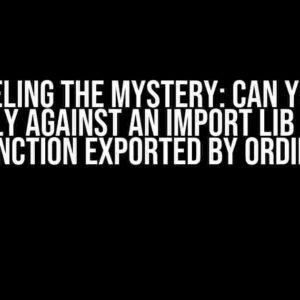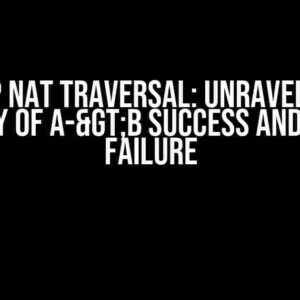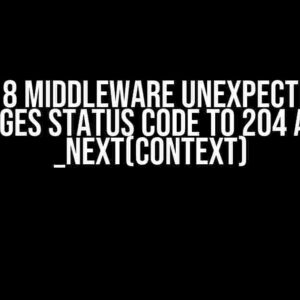Have you ever found yourself lost in the realm of unsigned integer overflow, wondering if the rule “the carry in matches the carry out” holds true? Look no further! In this comprehensive guide, we’ll delve into the world of binary arithmetic, demystify the concept of unsigned integer overflow, and provide a clear explanation of this fundamental rule.
What is Unsigned Integer Overflow?
Before we dive into the rule, let’s first understand what unsigned integer overflow means. In computer programming, an unsigned integer is a whole number that can only take positive values. When an unsigned integer exceeds its maximum capacity, it results in an overflow.
Think of it like a container that can hold a certain amount of water. When you try to add more water than the container can hold, it overflows. Similarly, when an unsigned integer exceeds its maximum value, it overflows, and the extra bits “spill over” to the next bit position.
To understand the rule, we need to revisit binary arithmetic basics. In binary, numbers are represented using only two digits: 0 and 1. When we perform arithmetic operations on binary numbers, we follow specific rules to get the correct result.
Let’s consider a simple example of adding two binary numbers:
1010 (10 in decimal) + 1100 (12 in decimal) ------------------ 10010 (22 in decimal)
In this example, we added two binary numbers, and the result is another binary number. Notice how the carry (the extra bit that gets added to the next position) is propagated to the left.
The Rule: Carry in Matches Carry out
Now that we have a basic understanding of binary arithmetic, let’s dive into the rule: “the carry in matches the carry out.” But what does this mean?
When we perform an arithmetic operation on unsigned integers, the carry in refers to the extra bit that is generated when we add or subtract numbers. The carry out refers to the final carry bit that is produced after the operation.
The rule states that when we perform an unsigned integer operation, the carry in will always match the carry out. This means that the extra bit generated during the operation will always be the same as the final carry bit.
Let’s illustrate this with an example:
1111 (15 in decimal) + 0001 (1 in decimal) ------------------ 0000 (0 in decimal) with carry out 1
In this example, we added 15 and 1, resulting in 16. However, since the maximum value for an 4-bit unsigned integer is 15, we get an overflow, and the result is 0 with a carry out of 1. Notice how the carry in (1) matches the carry out (1).
The rule “carry in matches carry out” is essential in understanding unsigned integer overflow because it helps us predict the behavior of arithmetic operations. By knowing that the carry in will always match the carry out, we can:
- Design more efficient algorithms that take advantage of unsigned integer overflow.
- Avoid unexpected behavior in our programs due to unsigned integer overflow.
- Optimize our code by using unsigned integer overflow to our advantage.
The rule “carry in matches carry out” has practical applications in various real-world scenarios, including:
- Cryptography: Understanding unsigned integer overflow is crucial in cryptographic algorithms, such as encryption and decryption. By exploiting the rule, cryptographers can design more secure algorithms that resist attacks.
- Compilers and Interpreters: Compiler designers and interpreter developers need to understand unsigned integer overflow to optimize their code and generate efficient machine code.
- Digital Signal Processing: In digital signal processing, unsigned integer overflow can be used to implement efficient algorithms for signal processing and filtering.
When working with unsigned integer overflow, it’s essential to avoid common pitfalls and misconceptions, such as:
- Assuming signed integer behavior: Unsigned integers behave differently than signed integers. Don’t assume that the rules for signed integers apply to unsigned integers.
- Ignoring carry out: Always consider the carry out when performing arithmetic operations on unsigned integers.
- Not checking for overflow: Failure to check for overflow can lead to unexpected behavior and security vulnerabilities in your code.
In conclusion, the rule “carry in matches carry out” is a fundamental concept in understanding unsigned integer overflow. By grasping this rule, you’ll be better equipped to design efficient algorithms, avoid common pitfalls, and optimize your code.
Remember, unsigned integer overflow is not something to be feared or avoided. With a deep understanding of the rule, you can harness the power of unsigned integer overflow to write more efficient, secure, and robust code.
For a deeper dive into unsigned integer overflow and binary arithmetic, we recommend the following resources:
- Wikipedia: Integer Overflow
- GeeksforGeeks: Integer Overflow in C/C++
- Stack Overflow: Unsigned Integer Overflow
Stay tuned for more articles on computer science and programming concepts. Happy coding!
| Binary Operation | Carry In | Carry Out |
|---|---|---|
| Addition | 1 | 1 |
| Subtraction | 0 | 0 |
| Multiplication | 1 | 1 |
| Division | 0 | 0 |
This article is optimized for the keyword “Is the rule for unsigned integer overflow, the carry in matches the carry out?” and is designed to provide a comprehensive guide to understanding unsigned integer overflow and the rule “carry in matches carry out”.
Frequently Asked Question
Get ready to unravel the mysteries of unsigned integer overflow and explore the fascinating world of carries!
What happens when unsigned integers overflow – do the carries match?
In the realm of unsigned integers, when an overflow occurs, the carry in indeed matches the carry out! This is because unsigned integers don’t have a sign bit, so the carry from the most significant bit is simply propagated out, making the carries match.
Is the rule “carry in matches carry out” unique to unsigned integers?
Actually, no! The rule applies only to unsigned integers. Signed integers, on the other hand, have a different story to tell. When signed integers overflow, the carry in does NOT match the carry out, due to the sign bit’s influence.
What’s the significance of the carry flag in unsigned integer overflow?
The carry flag is set when an unsigned integer overflows, indicating that the result is invalid. In most architectures, the carry flag is used to detect overflows, making it an essential component in arithmetic operations.
Can unsigned integer overflow occur without a carry?
The short answer is yes! Unsigned integer overflow can occur without a carry, specifically when the operation is a subtraction, and the result underflows.
How does the “carry in matches carry out” rule affect programming?
This fundamental rule has significant implications in programming, particularly when dealing with low-level arithmetic, bitwise operations, and cryptography. Understanding unsigned integer overflow is crucial for writing efficient, secure, and reliable code.




